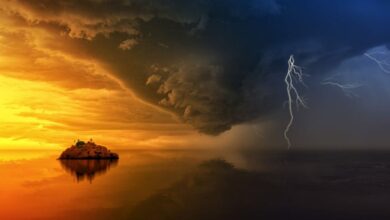What Are the Best Seasons for Aurora Borealis Viewing
The Aurora Borealis, commonly known as the Northern Lights, captivates millions with its stunning light displays that dance across the night sky. This natural phenomenon occurs when charged particles from the sun collide with atoms in the Earth’s atmosphere, creating vibrant colors that can range from greens to purples and reds. For those hoping to witness this breathtaking spectacle, timing is crucial. Understanding the best seasons for Aurora Borealis viewing can significantly enhance your chances of experiencing this magical event.
Optimal Winter Months
Winter is widely regarded as the prime season for viewing the Aurora Borealis. From late September to early April, the long nights and typically clear skies of winter create ideal conditions for observation. The peak months, however, are December through February. During these months, darkness falls early, often as early as 3 PM in northern latitudes, providing extended hours for potential aurora sightings.
In addition to the longer nights, winter brings colder temperatures that can help minimize cloud cover. Clear, crisp nights are not only more comfortable for viewing but also increase the likelihood of spotting the lights. Popular destinations like Tromsø in Norway, Fairbanks in Alaska, and Yellowknife in Canada offer prime opportunities during this season, with local tour operators frequently hosting aurora viewing excursions.
The Role of Solar Activity
While winter offers the best visibility, solar activity also plays a crucial role in the frequency and intensity of auroral displays. The solar cycle, an approximately 11-year cycle of solar activity, influences the occurrence of auroras. During periods of heightened solar activity, known as solar maxima, the chances of witnessing a vibrant aurora increase significantly. Therefore, it’s wise to check solar forecasts when planning your trip. Websites and apps that track solar activity can provide valuable information on the likelihood of auroras during your visit.
Transitioning Into Spring
As winter gives way to spring, the aurora viewing season does not end immediately. March and early April can still offer excellent opportunities to see the Northern Lights. The nights remain long enough for good visibility, and the weather can be more stable, leading to clearer skies. Additionally, spring brings longer daylight hours, allowing for a more balanced experience of outdoor activities during the day and aurora viewing at night.
Springtime auroras tend to have a unique quality; they can be less frequent but often display vibrant colors that are particularly striking against the clear skies. As the temperatures begin to rise, the landscape transforms, offering a different backdrop for your aurora viewing experience. This season is perfect for those looking to combine winter sports with an opportunity to witness the lights.
Avoiding Summer and Fall
Summer is generally considered the off-season for aurora viewing. With the Midnight Sun phenomenon in full swing, northern regions experience nearly continuous daylight, making it nearly impossible to see the Northern Lights. Therefore, if your goal is to experience this awe-inspiring natural display, it’s best to avoid planning trips during the summer months.
Fall, on the other hand, can be a bit of a wildcard. From late August to early September, the nights start to lengthen, and conditions may be favorable for aurora sightings. However, the weather can be unpredictable, and cloudy nights are more common. While some lucky travelers might catch a glimpse of the lights during this time, it’s generally not regarded as a prime season for aurora hunting.
Timing Your Adventure
To maximize your chances of seeing the Aurora Borealis, it’s essential to plan your trip around both seasonal patterns and solar activity. Aim for winter months, particularly from late September to early April, with a focus on December through February. Keep an eye on solar forecasts and local weather conditions, and be prepared to venture out during the late evening hours when activity typically peaks.
Exploring the Northern Lights
Witnessing the Aurora Borealis is more than just a visual experience; it’s an emotional one that can leave you in awe of the natural world. By understanding the best seasons for viewing this magnificent phenomenon, you can enhance your travel plans and immerse yourself in one of nature’s most stunning displays. Whether you choose to embark on a winter adventure or catch the tail end of the aurora season in spring, the Northern Lights promise an unforgettable experience.







